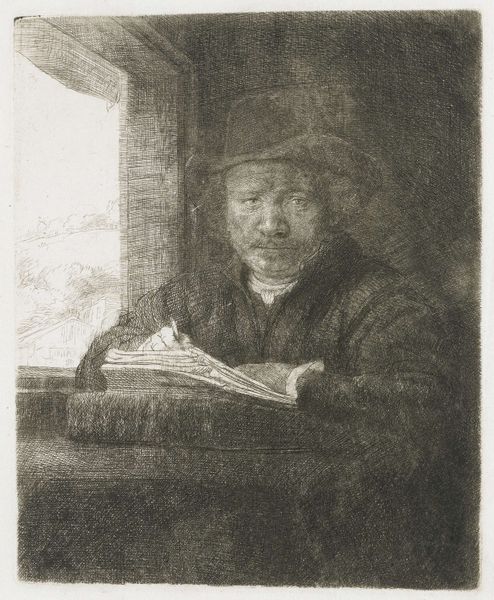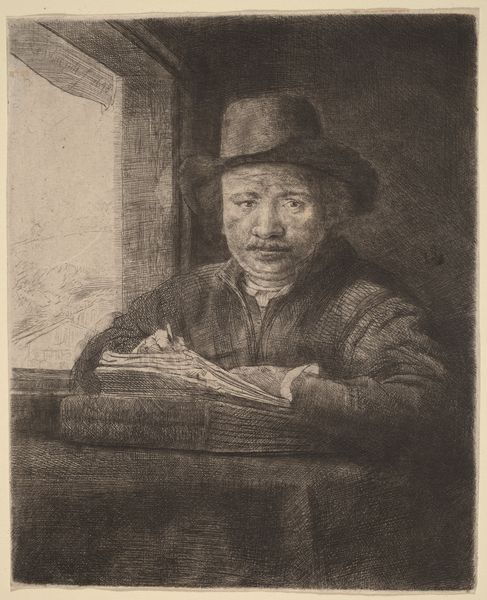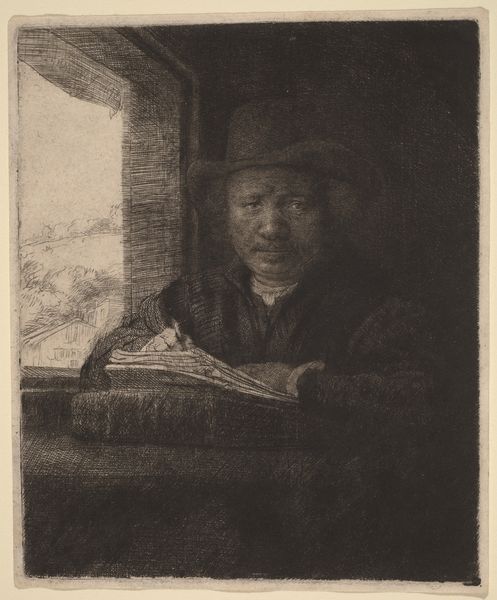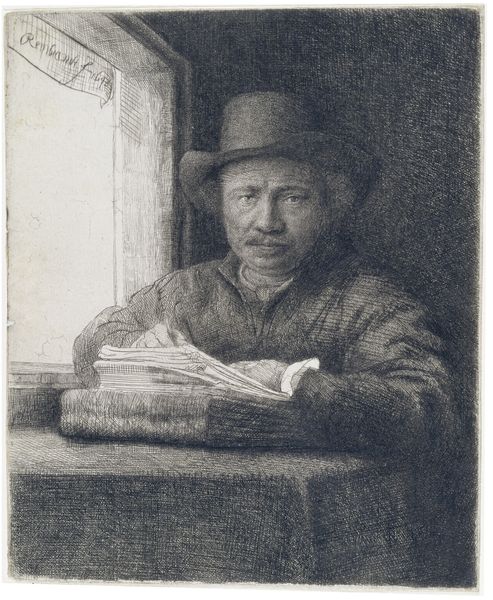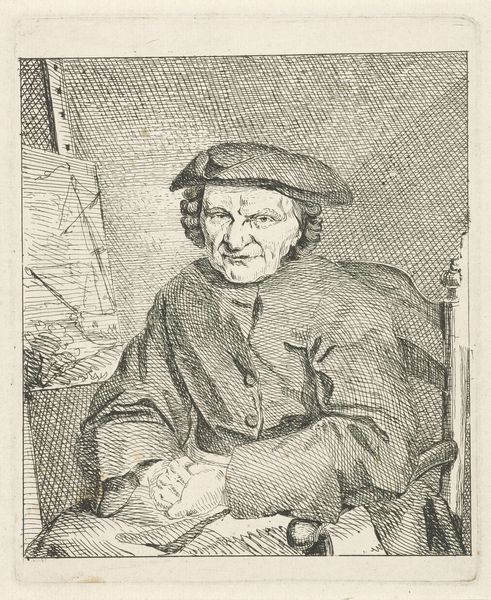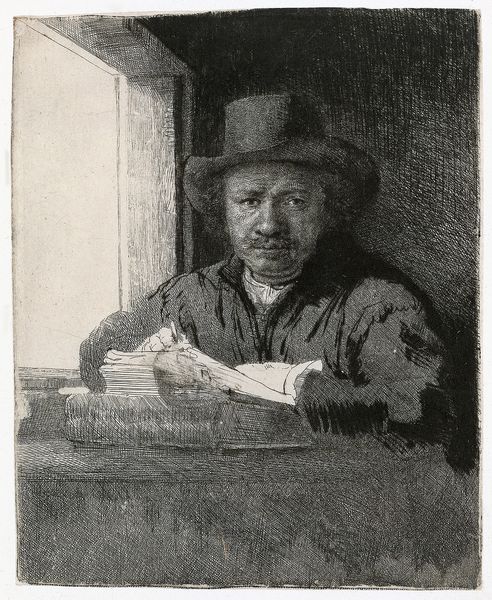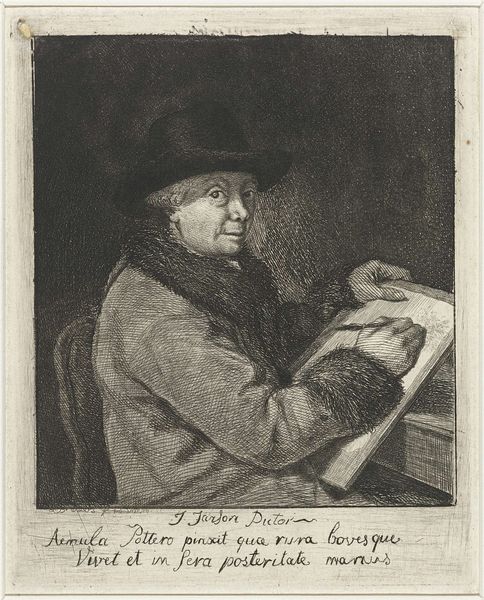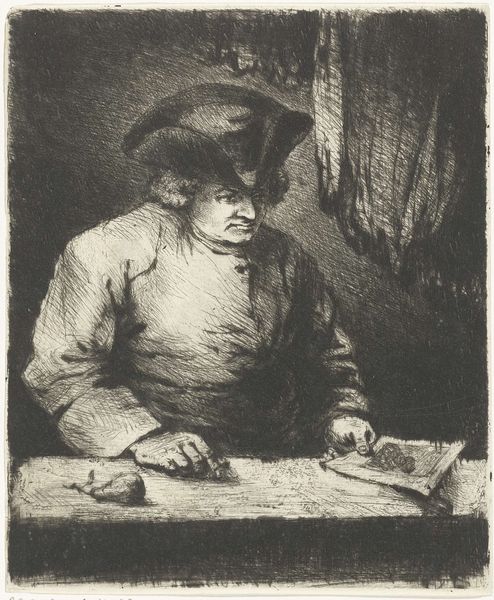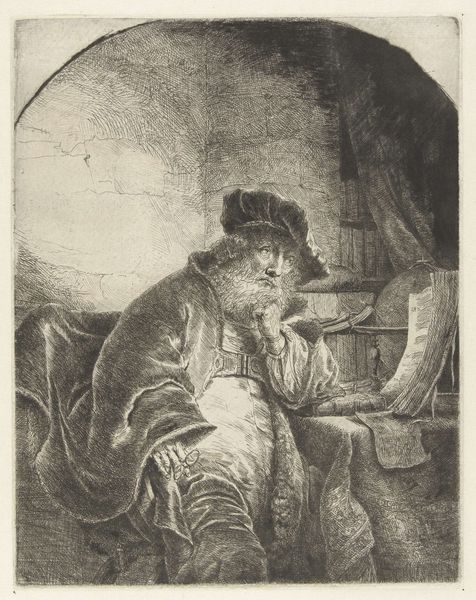
drawing, etching
#
portrait
#
pencil drawn
#
drawing
#
self-portrait
#
dutch-golden-age
#
etching
#
pencil sketch
#
charcoal drawing
#
pencil drawing
#
portrait drawing
Copyright: Public Domain: Artvee
Rembrandt van Rijn created this etching, called “Rembrandt Drawing at a Window,” in the Dutch Golden Age. Here, Rembrandt depicts himself in the act of artistic creation. The window, a classical trope, signifies an artist’s ability to see and represent the world. He is not simply copying what he sees outside the window, but using his art to interpret the world. The image speaks to the rising status of the artist in 17th-century Netherlands. As the merchant class grew, the Dutch Republic became a center for artistic production and trade, as well as innovation in science and philosophy. Rembrandt's etching is an example of the growing self-awareness among artists of their social and cultural roles. Historians can use letters, journals, and institutional records to contextualize this artwork, connecting it to the socio-political climate in which Rembrandt worked, and to better understand the changing role of the artist in society.
Comments
No comments
Be the first to comment and join the conversation on the ultimate creative platform.
